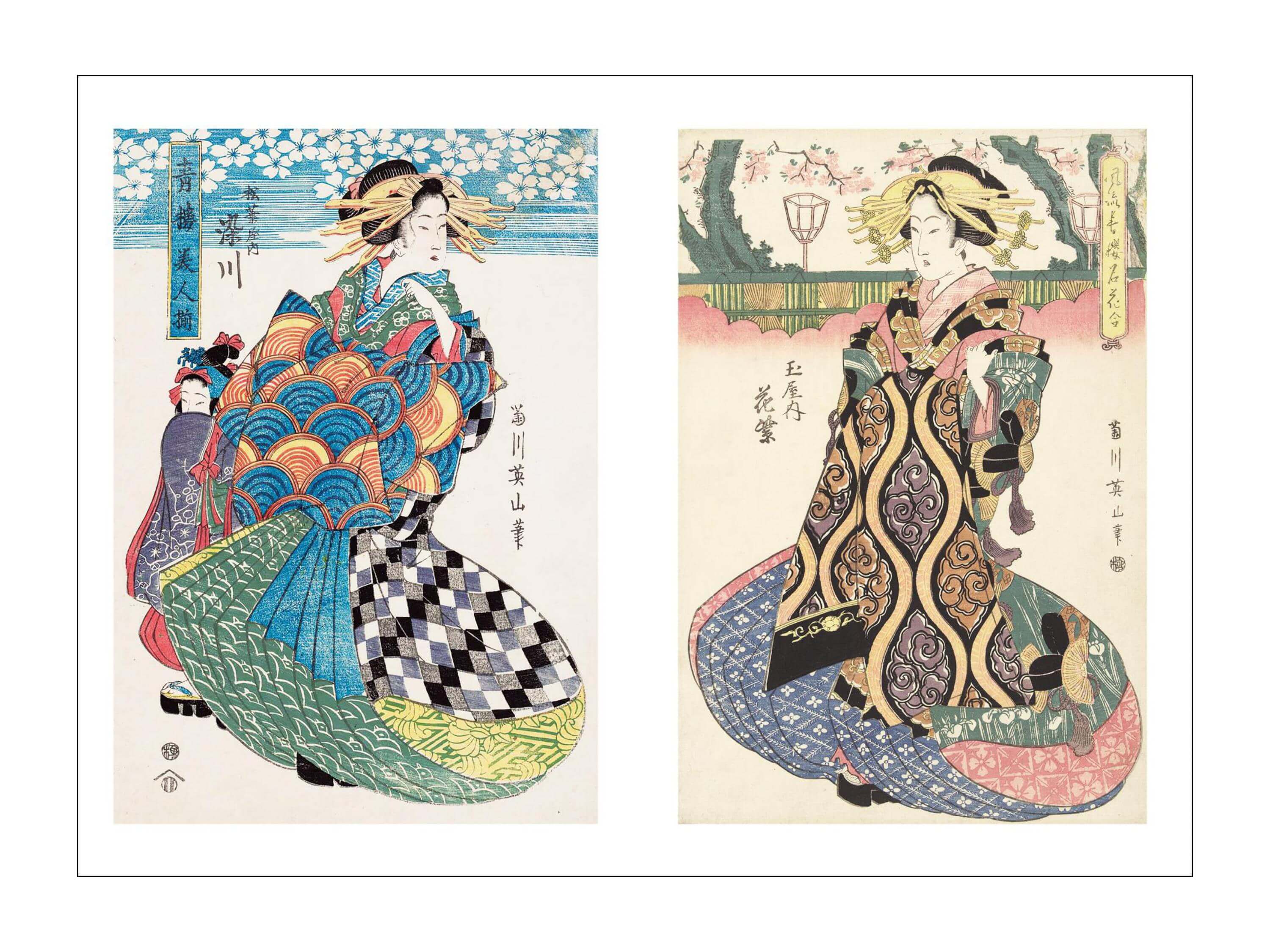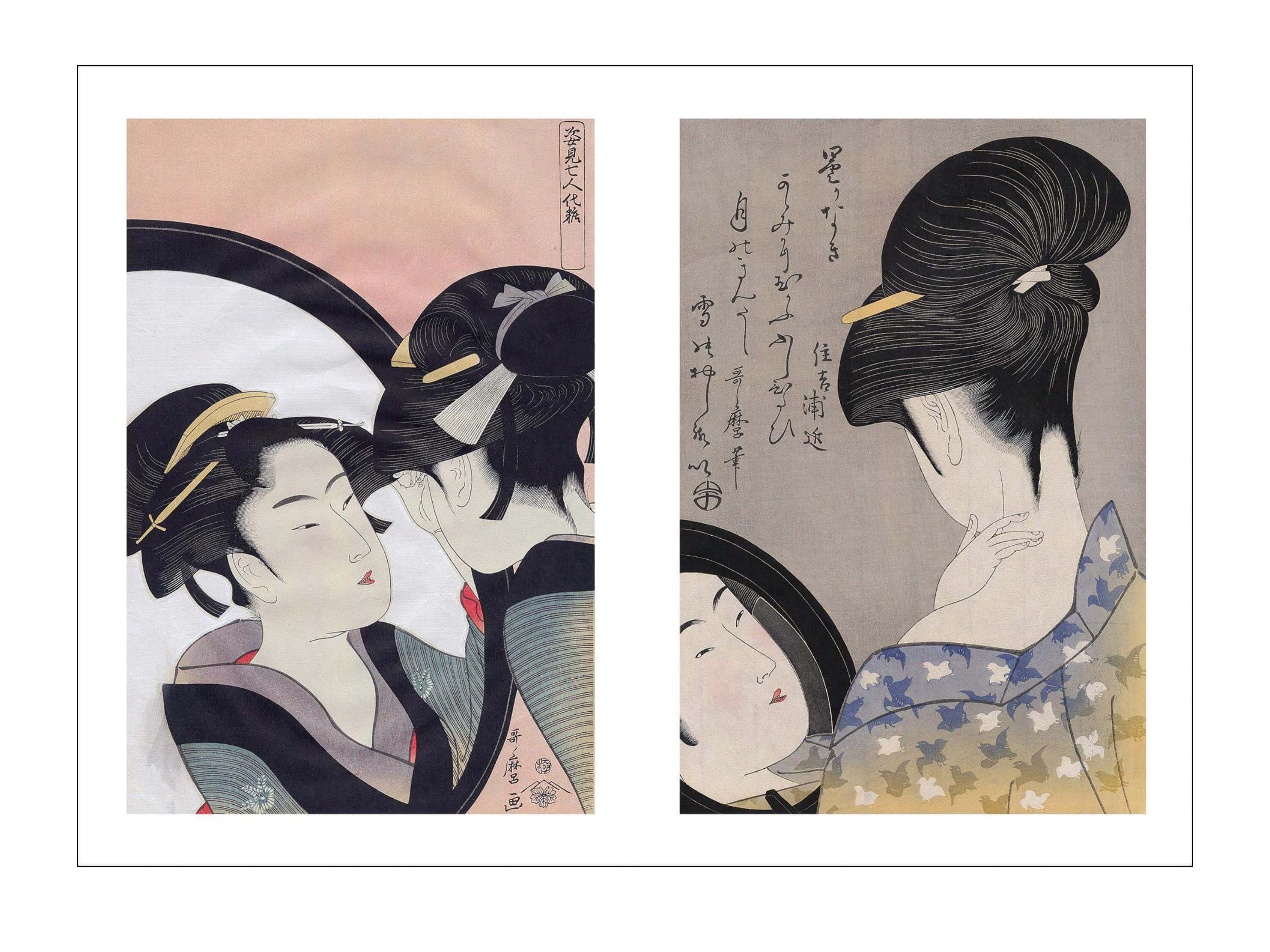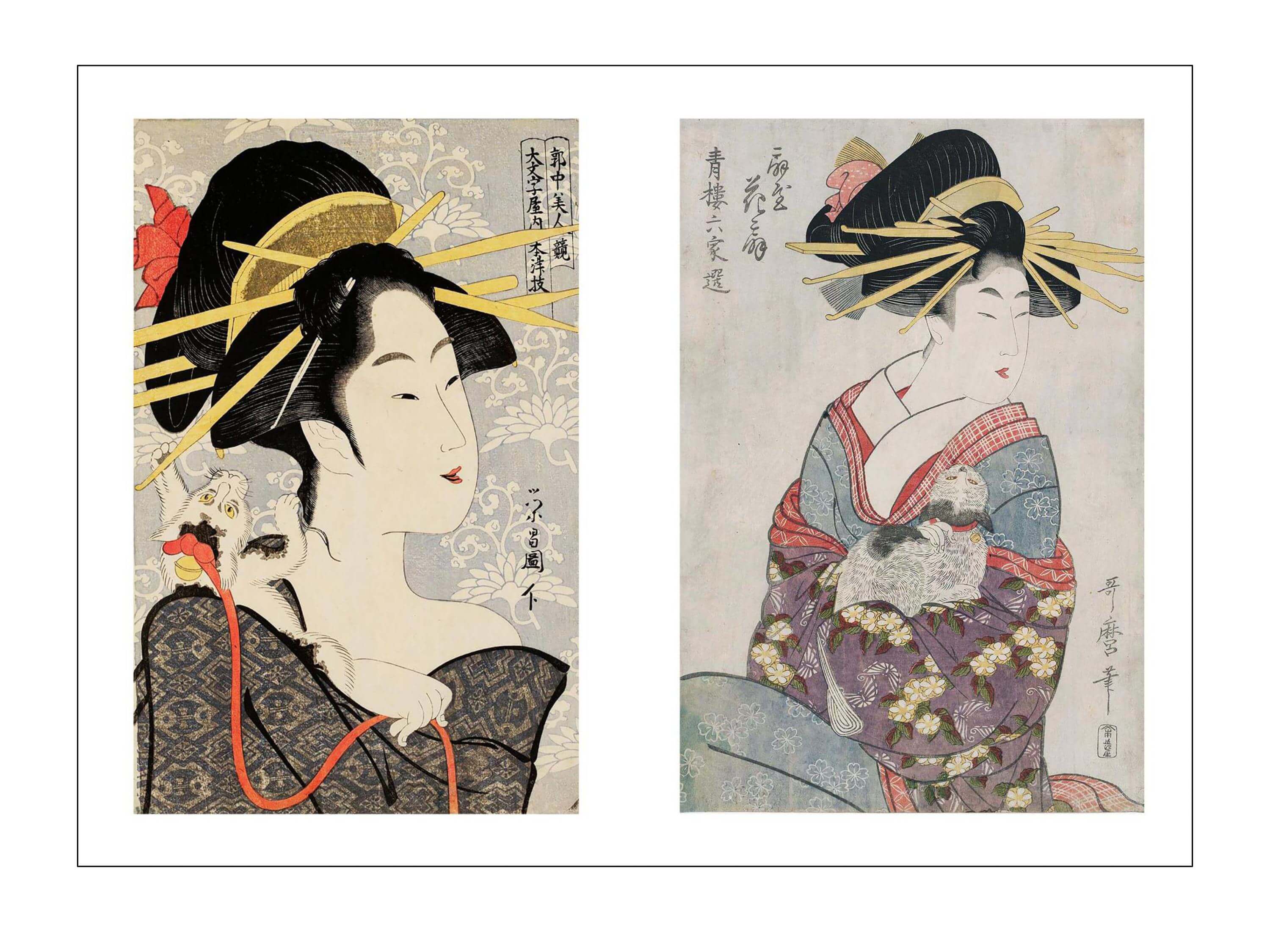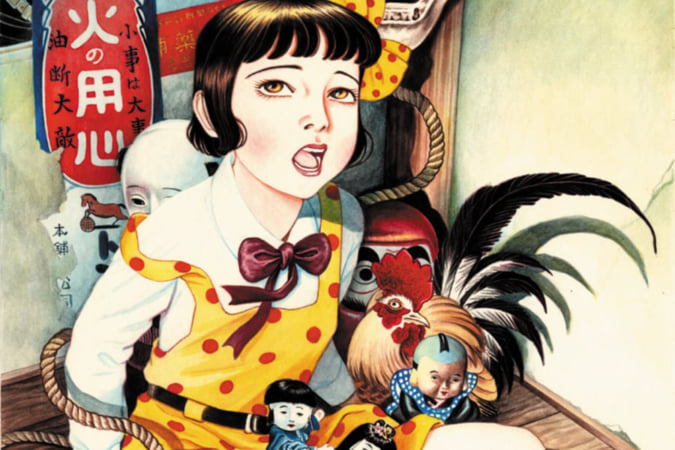Engravings as an Ode to Feminine Grace
The book 'Women Celebrated by the Great Masters of Engraving' features 'bijin-ga', images of beauties with perfect features.

© Éditions Hazan
Women dressed in colourful kimono, sometimes gazing at their reflection in a mirror and other times putting a lock of hair back in place in their chignon, practising ikebana, the Japanese floral art, or admiring the cherry blossoms in bloom. The one hundred images compiled in the book Les femmes célébrées par les grands maîtres de l’estampe (‘Women Celebrated by the Great Masters of Engraving’) by Amélie Balcou showcase the beauty of Japanese women during the Edo period (1603-1868).
These engravings, most of which depict courtesans, but also young girls and mothers with fine features, a proud bearing, and delicate gestures, are known as bijin-ga, which translates literally as ‘beautiful people’, even if in reality, they only represent women. This artistic genre, popularised at the beginning of the Edo period, achieved great success with the chonin, members of the new urban and merchant bourgeoisie.
Finely worked details
The book, with its multiple pieces reproduced in leporello format—a layout where the images appear on sheets folded like an accordion—extends to infinity. The reader can admire the work of the most iconic figures in engraving, such as Katsushika Hokusai, Kunisada Utagawa, and Utamaro Kitagawa, in which, in addition to reproducing the perfect beauty of women, particularly close attention is paid to details: the delicate colours of the kimono, the refined hairstyles, and the richness of the outfits worn by the courtesans.
Les femmes célébrées par les grands maîtres de l’estampe (‘Women Celebrated by the Great Masters of Engraving’) (2019) is a book published by Editions Hazan.

© Éditions Hazan

© Éditions Hazan
TRENDING
-
The Tattoos that Marked the Criminals of the Edo Period
Traditional tattoos were strong signifiers; murderers had head tattoos, while theft might result in an arm tattoo.

-
The Story of Sada Yacco, the Geisha who Bewitched Europe
Described by Dazed magazine as the first beauty influencer, she has been restored to her former glory since 2019.

-
Chiharu Shiota, Red Threads of the Soul
Last year, more than 660,000 people visited the retrospective 'Chiharu Shiota: The Soul Trembles' exhibit at the Mori Art Museum.

-
Japanese Left-field Pop From The CD Age, 1989-1996
‘Heisei No Oto’, a compilation of hidden gems in the unspoken depths of Japanese pop, reveal blissful moment of technological possibility.

-
‘Shojo Tsubaki’, A Freakshow
Underground manga artist Suehiro Maruo’s infamous masterpiece canonised a historical fascination towards the erotic-grotesque genre.





